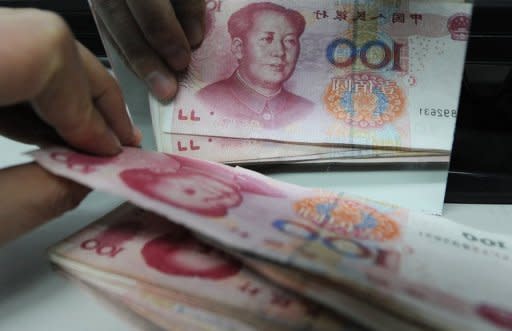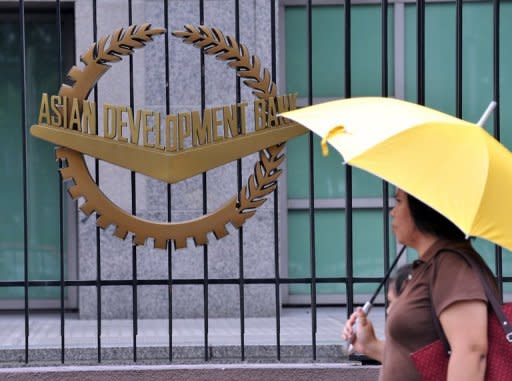Yuan on track to become Asia 'anchor' currency: ADB
China's yuan is increasingly being used to settle trade transactions in Asia, gradually cementing its way to becoming a regional 'anchor' currency, the Asian Development Bank (ADB) said Thursday. The rise of the currency's use in trade and in the financial markets is likely to nudge China to further open up its financial sector if it wants the yuan to play a bigger global role, the Manila-based lender said. The yuan, or renminbi, "is being increasingly used to settle trade transactions", the ADB said in a statement issued in Singapore at the launch of its latest report, the Asian Economic Integration Monitor. "Over time it could become an anchor currency, helping the region to integrate their economies, cooperate on monetary and finance issues as well as gradually open up the (Chinese) financial market," the statement said. Iwan Azis, head of ADB's Office of Regional Economic Integration, told reporters at the launch that some countries engaging in bilateral trade with China settle in renminbi, and their number has been increasing. "I know that policymakers in Beijing are actively persuading ASEAN countries to use yuan for their bilateral trade settlement with China," he said, referring to the 10-member Association of Southeast Asian Nations. Hong Kong, Singapore and London settle some international trade in yuan, and this month the Singapore Exchange said it is ready to quote, trade, clear and settle securities denominated in yuan, the ADB report said. "All in all, it makes sense that some of the players -- exporters and importers -- start to accept the use of alternative currency, and since China is the biggest player in the field, they accept the use of the yuan for trade settlement," Azis said. He said it is "only a matter of time" before the yuan becomes an anchor currency, given that China is now the world's second biggest economy. Since late 2008 China has established 20 bilateral local currency swap arrangements with countries within and outside Asia, totalling 1.6 trillion yuan ($157 billion), ADB said. In the first quarter of this year, current account transactions settled in yuan were 8.6 percent of China's total current account deals, well above the 5.7 percent in the same quarter last year, it added. "This is a very big step forward. Definitely, they are pushing the renminbi toward internationalisation," ADB economist Lei Lei Song said in Singapore. He said, however, that becoming an anchor currency does not automatically mean the yuan will become part of the forex reserves of Asian countries, most of which hold the US dollar, euro and the Japanese yen. Being an anchor currency means that regional countries that use the yuan to settle their trade with China will manage their currencies depending on the yuan's movements. The yuan can become a reserve currency if China opens up its financial markets and allows other countries to buy and hold yuan assets, said Song. Malaysia's central bank is allowed to buy yuan bonds, he said, adding that China, Japan and South Korea had agreed to purchase each other's government bonds, while the yen and the yuan can be traded in each of the countries' financial markets. "Everything is moving in a managed away," Song added.



